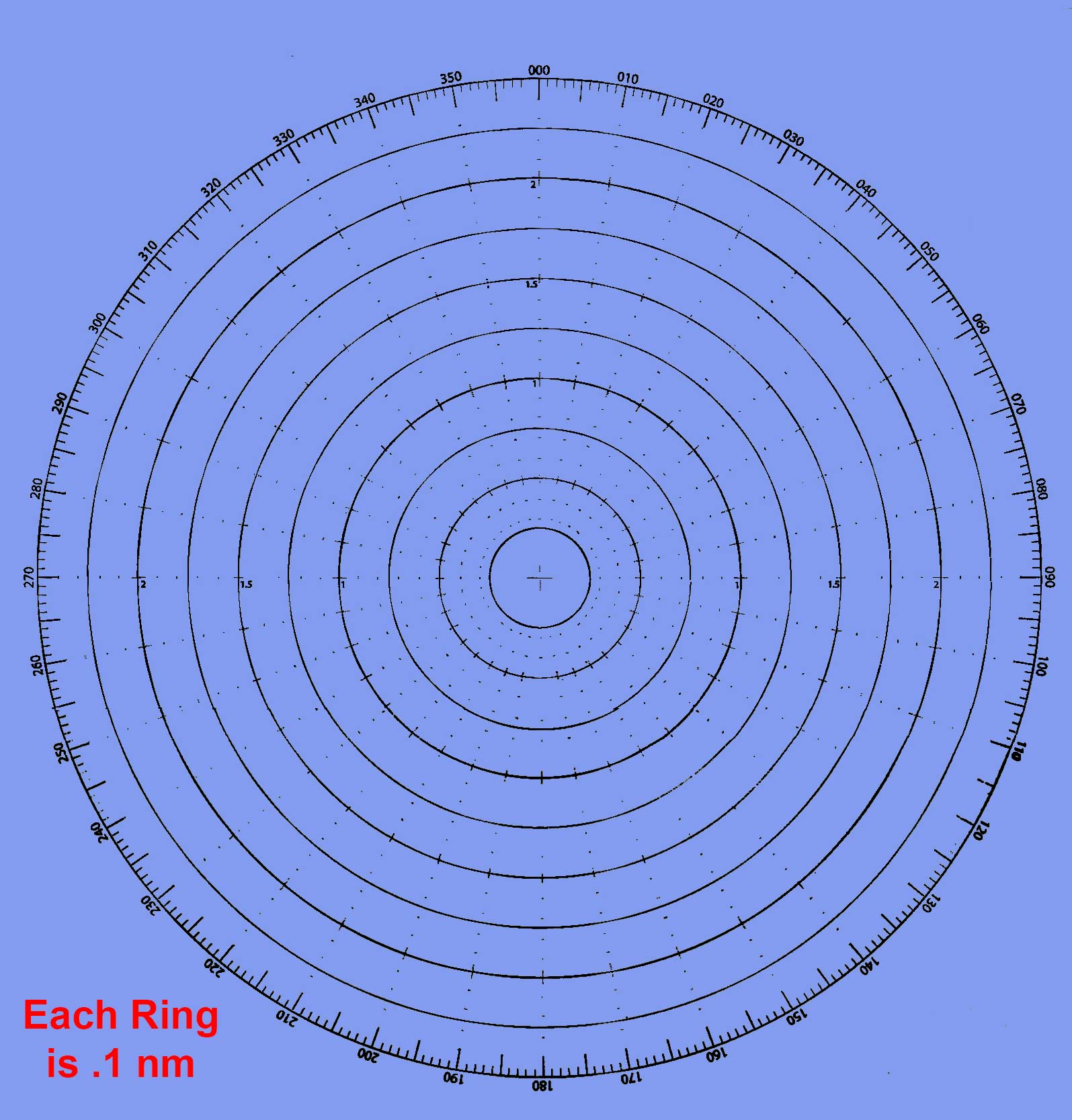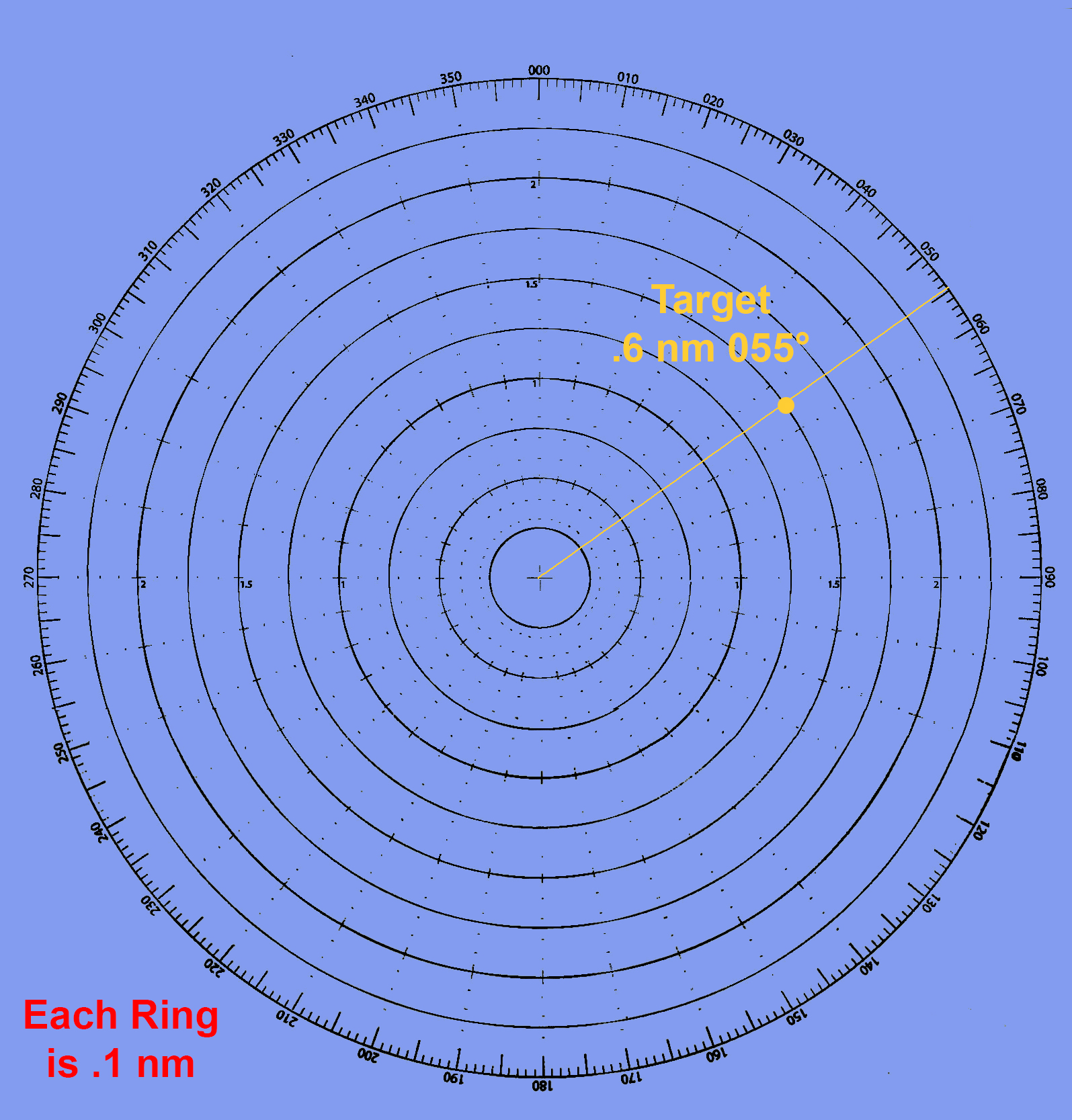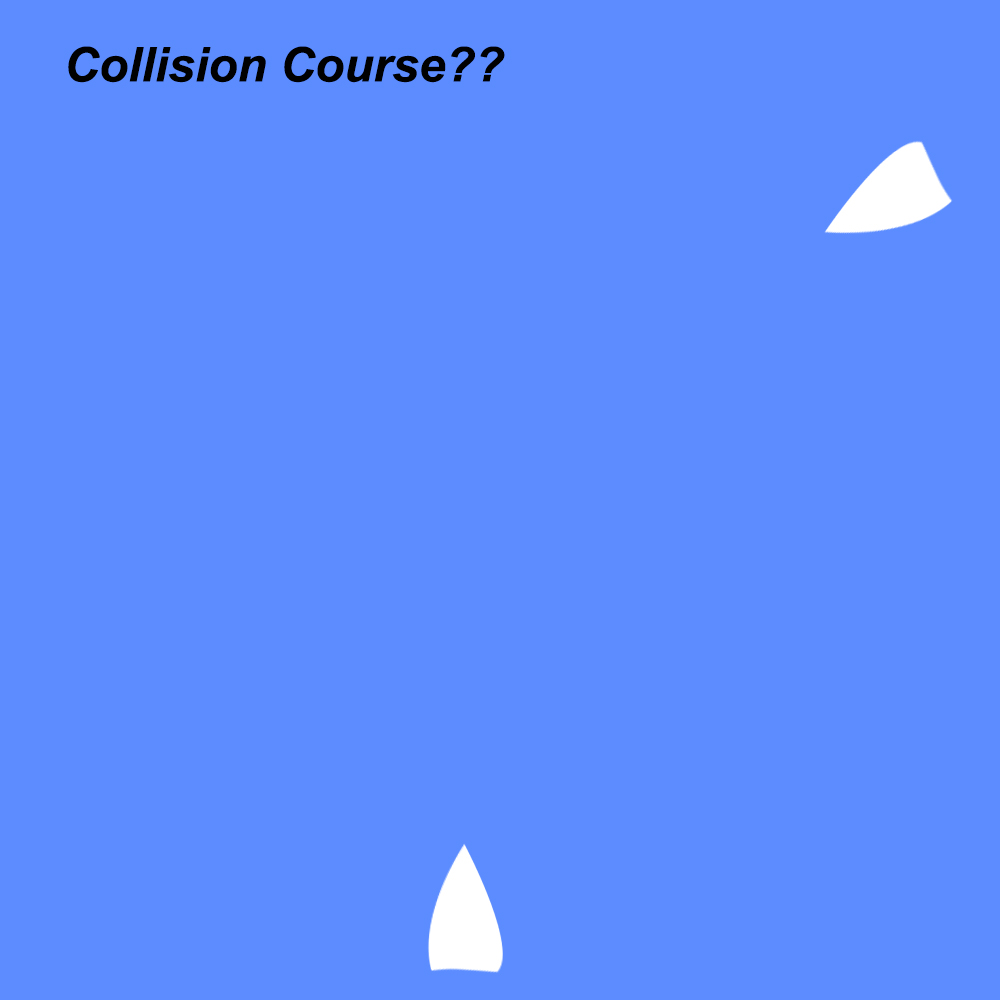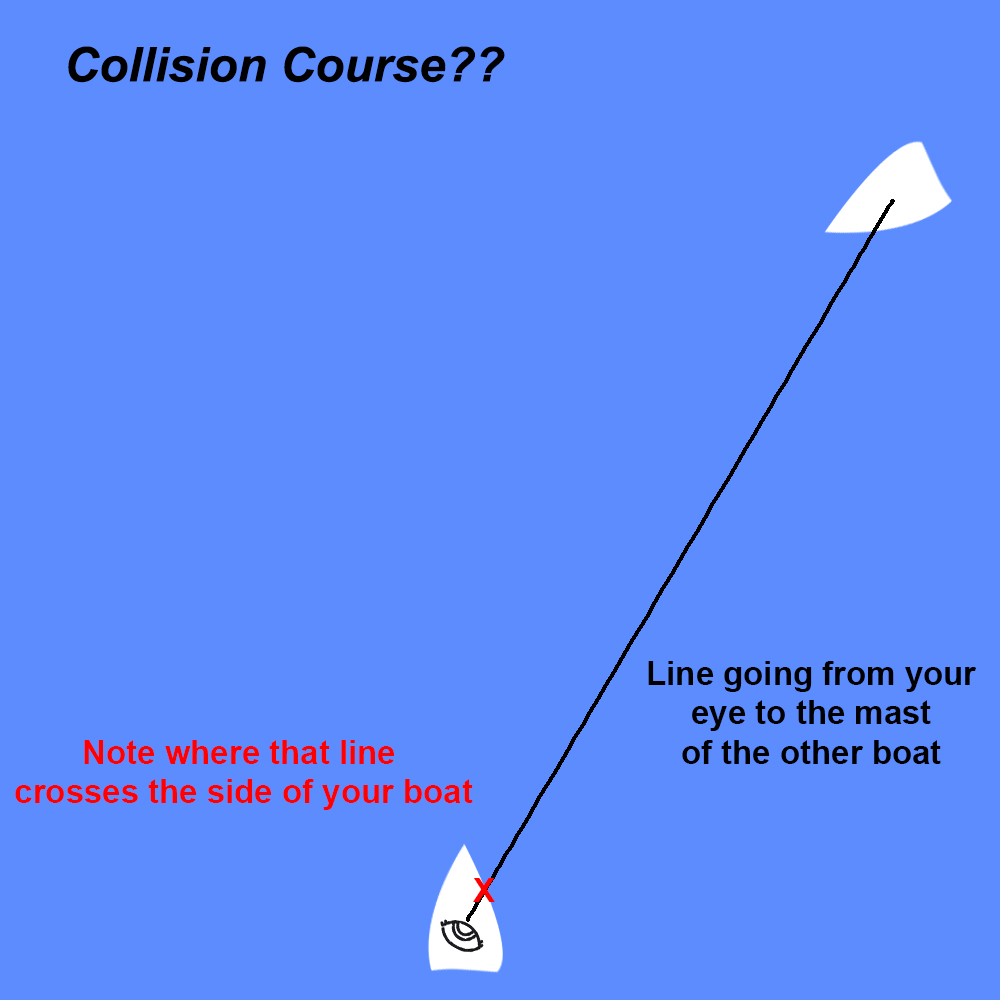Ranging - Part 4
What is Ranging?
Ranging is a technique useful in all types of boating to determine whether you are sailing a straight course over ground or are being pushed one way or another (by leeway or current). It is also useful to tell you whether your current course will allow you to clear an object (get through the gap in the Berkeley Pier, say).
The basics are described in Part 1, which describes how to use it crossing a channel with current to maintain a straight course across. Part 2 shows ranging to determine whether you can clear an object, and Part 3 shows how to use it to determine your position in certain cases.
This time we’re going to use a variant of it to answer the question "am I on a collision course with another boat?"
Oddly, we’re going to start with how you use radar to do this. I say “oddly” because none of our boats have it, but the principles you use for radar apply here also.
Using Radar to Answer the Question
Marine radar can be used to determine whether you're on a collision course. Radar will tell you two things about another boat (a target) – its distance from you and its bearing (simplifying a little, this is the compass bearing from you to the target). A radar set looks like this, roughly:

Targets appear as dots (or smudges) on the plot, and their location indicates distance and bearing. You are in the center of the plot. Distance is marked by the rings going outward (each of them is .1 nm in this example) and bearing the the radial lines going out from the center.
This is what another boat (a target) might look like:

In this case, it's .6 nm away with a bearing of 55°. So far, this tells you nothing about whether you're on a collision course. You need to watch what happens as things progress. Here's the target at two successive times (with the original position left on for reference):

It is getting closer and on the same bearing.
You see what's going to happen if this continues, of course - a collision. What you're looking for on radar is constant bearing with decreasing distance. This means a collision course. If you think about it a little, you'll see that the converse is also true. If you do not see constant bearing with decreasing distance, then you are not on a collision course (assuming neither boat changes speed or course).
So let's go out an apply this. Trivia question: which CSC keelboats have radar? And which dingies? Everybody get None?
The Principle to Apply
So why did I bother to talk about radar at all? Because it demonstrates a principle that you can apply using other tools, some of them very simple. Constant bearing with decreasing distance means collision course.
How to Apply This Without Radar
First of all, you don't need to know the exact distance to the other boat to apply the principle. You don't even need to guess the distance. All you need to know is whether it's getting closer (decreasing distance), and that ain't hard.
What you do need to do is estimate bearing to see whether it's constant. If you have a hand-held compass (like my hockey puck compass) you could do it easily with that. Take a bearing and watch it as the other boat gets closer. Collision course if the bearing doesn't change. But most of us don't have one of these, and although I do, I'd have to rummage through my Senior kit to get it, probably too late to be useful.
The other thing to realize is that you don't need to know, even approximately, what the bearing to the other boat actually is. All you need to know is whether it is changing, and that is surprisingly easy to do, and you do it the same way on a dinghy and on a keelboat. But for this to work, you have to maintain a relatively constant course. Here’s the situation:

Simply look at the other boat and imagine a line going from your eyes to the other boat. Look at where that line crosses your boat's gunwhale, like here:

As you get closer to the other boat, keep looking and see whether the point where the line crosses your boat's gunwhale moves or not. If it does not move, you are on a collision course.


If your boat is getting knocked around a bit in waves, you'll have to average it out as you do it and be more conservative in judging the result. If you're racing and need to be really precise, you should have had the hockey puck compass in your hand.
Conclusion
I hope to have presented a very simple (and simple to understand) method for determining whether you are on a collision course.
Up Next
There is a common misconception about how to determine a collision course using ranging, and I will go into Myth Buster mode to discuss it.
When you subscribe to the blog, we will send you an e-mail when there are new updates on the site so you wouldn't miss them.



Comments